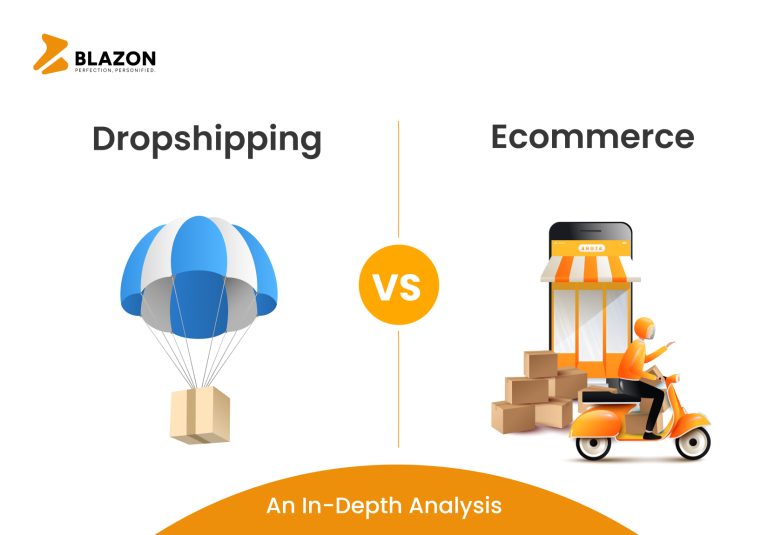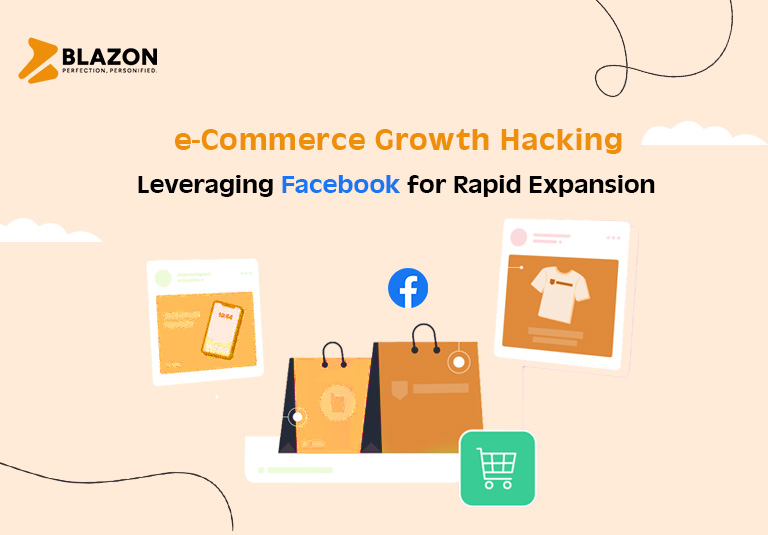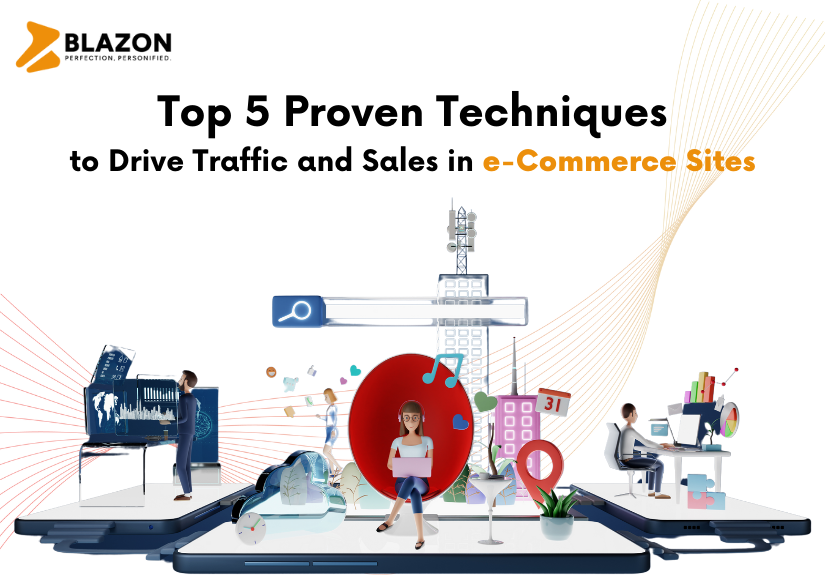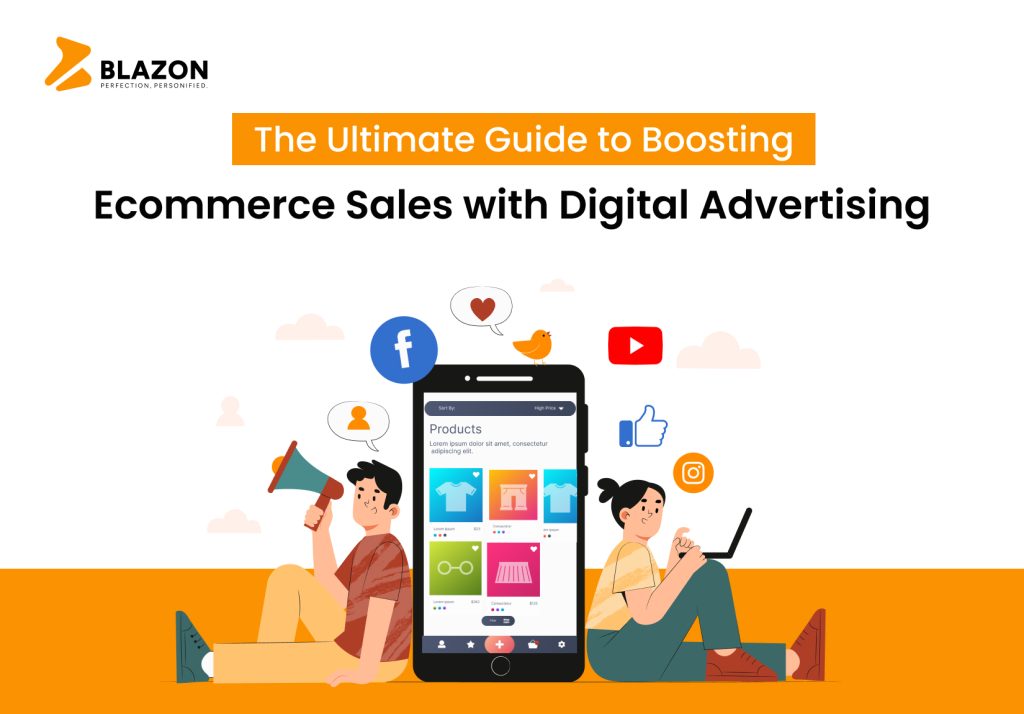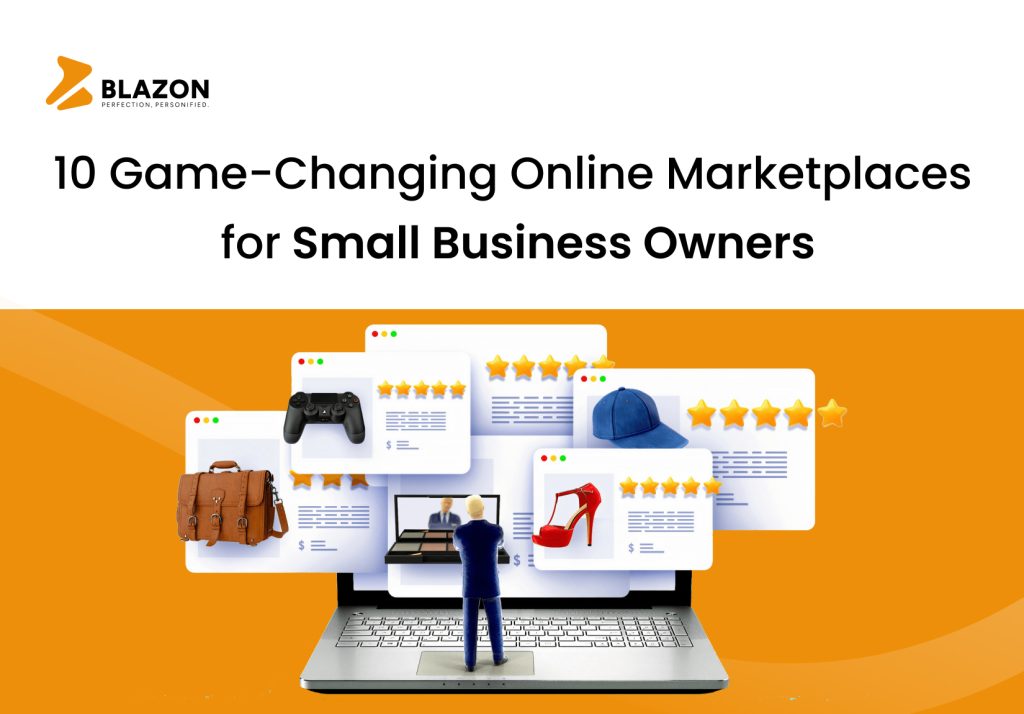Dropshipping and Hyva eCommerce Development are two business strategies that have become increasingly popular in the rapidly changing world of online shopping, each with its pros and disadvantages. Understanding the fundamental distinctions between these two strategies is essential whether you’re a beginning business owner trying to break into the internet marketplace or an established company owner seeking new opportunities. This blog article will examine the fundamental differences between dropshipping and eCommerce from the perspectives of costs, marketing approaches, user experiences, and scalability. In conclusion, you’ll be able to navigate the changing world of digital retail and identify the route that best suits your business goals.
Understanding Dropshipping
What Is Dropshipping?
Dropshipping is an order fulfillment strategy where a company does not retain inventory of the goods it sells. Unlike traditional retail, dropshipping involves sellers sourcing goods when orders arrive from third-party suppliers. Sellers act as intermediaries. It’s popular due to minimal upfront investment, inventory risk mitigation, and appeal to businesses of all sizes.
Advantages Of Dropshipping
1. Less Upfront Capital Required
The ability to create an ecommerce business without spending thousands of dollars on goods and Ecommerce Development is one of the best thing about dropshipping. Traditional retail necessitates upfront investment in inventory. In dropshipping, you procure items only after customers pay, reducing financial commitment until transactions are finalized. Without making sizable initial inventory commitments, dropshipping may be started and successfully operated on a very tight budget.
Starting a dropshipping business also carries less risk since, unlike other business models, you’re not obligated to sell through any inventory you buy upfront.
2. Easy To Start
Running an e-commerce business becomes notably more accessible when not handling physical inventory.
- Taking care of or financing a warehouse
- Assembling and sending off your orders
- Inventory tracking for accounting purposes
- Handling incoming shipments and returns
- Making orders for products often and monitoring stock levels
3. Low Overhead
Operating a successful dropshipping business from home requires minimal overhead expenses. You typically need just a laptop and a few regular expenditures. While costs may increase with growth, they remain significantly lower than traditional brick-and-mortar businesses.
4. Flexible Location
Dropshipping enables the potential for a profitable business from virtually anywhere with internet access. You can manage and sustain your business as long as you can effectively communicate with suppliers and provide satisfactory customer service and support.
5. Wide Selection Of Products To Sell
You are not required to pre-purchase the items you sell in dropshipping, allowing you to offer a diverse range of popular products to potential customers. Furthermore, you can change your list of dropshipping items without concerns about unsold inventory. If suppliers have them in stock, you can feature articles in your online store without extra cost.
Disadvantages Of Dropshipping
1. Low Profit Margins
Low profitability is the main drawback of working in a fiercely competitive dropshipping sector. Many competing businesses will launch a dropshipping store and sell items at excessive discounts to enhance sales because of how easy it is to get started and how little the overhead expenditures are. They can afford to operate on such slim margins since they invested so little money in the company’s founding. These vendors typically need better (if any) customer service and low-quality websites, which might help you distinguish your dropshipping business from theirs. However, buyers will still compare their pricing to yours. This competition increase will quickly harm the potential profit margin of a specialty. You can rapidly calculate your margins if you are worried about them.
2. Inventory Issues
It is easy to keep track of which things are in and out of stock if you stock all of your products. However, inventory might fluctuate daily if you purchase from several warehouses simultaneously, completing orders for other retailers. Thanks to a few applications, you can sync with suppliers these days. Dropshippers should thus be able to quickly “pass along” client orders to a dropshipping supplier and view the provider’s inventory levels in real time.
3. Shipping Complexities
The items on your online shop will be sourced through several different dropshippers if you work with many suppliers, as most dropshippers do. Because of this, you are unable to influence the supply chain. Imagine a customer ordering three items that can only be acquired from various suppliers. Sending each item to the consumer will cost you three different shipping fees, but it is probably not a good idea to pass this expense on to the customer. Even when it is logical to incorporate these fees, automating these drop shipping estimates might take a lot of work.
4. Supplier Errors
Have there ever been times when you had to accept responsibility for something, even if it wasn’t your fault? Even the most incredible dropshipping vendors occasionally make errors in order fulfillment; if this happens, you must accept responsibility and extend an apology. Additionally, reliable suppliers may degrade the customer experience through misplaced merchandise, delayed drop shipments, improper packing, and poor product quality, all of which can help your company’s image.
5. Limited Customer Service
If you shop online for a computer, you can’t just request an employee to physically showcase the features of a specific model. Typically, the provider designs and brands the product being dropshipped. A few dropshipping vendors can adapt to your company’s product adjustments. Even then, the supplier still has the most significant influence on the product. A minimum order quantity is typically necessary for product modifications or additions to make the manufacturer’s business sustainable and profitable.
Understanding Ecommerce
What Is Ecommerce?
The Internet trade of products and services is called “ecommerce” or “electronic commerce.” Your busy city center or physical store is being converted into zeroes and ones on the information superhighway. Online purchases are made by an estimated 2.14 billion individuals worldwide, and more than 200 million Prime members shop at Amazon locations worldwide.
One method used in the retail industry for purchasing and selling goods is e-commerce. E-commerce serves diverse business models. Some solely operate online, while others integrate it into a multi-channel strategy with physical stores. In any situation, it empowers businesses, irrespective of their size, to broaden their reach and engage with a global audience.
Advantages Of Ecommerce
1. Convenience
E-commerce has become incredibly user-friendly and handy for everyone because it is accessible 24/7, 365 days per year. Even if managing an online store might take a lot of effort, it is still possible to earn money at night.
2. Increased Choice
Several merchants provide a more comprehensive range of products online than at their actual stores. Additionally, many online-only companies may give the customers particular stock inaccessible elsewhere.
3. Potentially Lower Startup Cost
While e-commerce businesses sometimes do not require a physical storefront, they may need a warehouse or manufacturing facility. Digital operations are often less expensive than paying rent, insurance, maintenance fees, and property taxes.
4. International Sales
A company that sells online may reach customers anywhere worldwide as long as it can transport their purchases there. When clients browse a digital marketplace, it is easier to draw their attention to cleverly placed advertisements, focused marketing campaigns, or pop-ups created with a particular objective.
Disadvantages Of Ecommerce
1. Limited Customer Service
You can’t just ask a salesperson to show you a specific model’s features in person if you buy a computer online. Some websites offer online chat with staff, but it’s rare. Online shopping needs instant gratification; items must be shipped. Amazon eases this with same-day delivery for select products.
2. Inability To Touch Products
Online pictures only sometimes accurately represent a product; online purchases might be disappointing if the final product does not live up to the customer’s expectations. As an illustration, a piece of apparel could be constructed of inferior fabric than its web depiction suggests.
3. Dependence On Technology
Your company effectively shuts down until the e-commerce store is back up if your website fails, has high traffic, or needs to be temporarily shut down for whatever reason.
4. Higher Competition
While the low barrier to entry is advantageous, it also means that competitors can quickly join the market. E-commerce businesses must prioritize their marketing strategies and remain diligent in optimizing SEO to ensure a solid online presence.
Dropshipping Vs Ecommerce: The Key Differences
1. Costs And Investments
Since dropshipping doesn’t need businesses to make significant inventory investments, it often has cheaper up-front costs. Instead, when orders come in from customers, shops buy goods from suppliers. Contrarily, traditional eCommerce demands large outlays for acquiring, maintaining, and keeping goods and warehouse costs.
2. Marketing And Sales Methods
Dropshipping frequently uses digital marketing methods, including social media advertising, search engine optimization(SEO), and influencer alliances. Traditional eCommerce includes various tactics, such as managing independent websites, maintaining physical stores, and using multi-channel marketing.
3. Customer Experience And Support
The two models significantly differ in terms of customer experience and support. Retailers may need more control over product quality and shipping schedules while dropshipping, which might impact consumer satisfaction. Traditional eCommerce companies frequently have better control over these factors, enabling more standardized and adaptable consumer experiences.
4. Scalability And Growth
Both models face particular problems and benefits related to scalability and growth. Without the restrictions of maintaining inventory, dropshipping may quickly increase its product offering, providing flexibility and the simple testing of new items. Traditional eCommerce companies may need ample warehouse space as they grow and encounter inventory management challenges. They can, however, more successfully create brand loyalty and have better control over product quality.
Dropshipping Vs Ecommerce Which Is Better
Your business objectives, available resources, and personal tastes will determine whether you choose dropshipping or conventional e-commerce. With the dropshipping business model, you collaborate with suppliers who take care of storage, packing, and shipping instead of keeping inventory. As a result, there are less upfront expenses and fewer inventory management hazards.
However, it frequently leads to smaller profit margins and less control over the calibre of the goods and delivery schedules. Dropshipping offers a low-risk, low-cost option for starting an online business, while traditional e-commerce involves higher initial investment but greater control and profit potential. Modern ecommerce success depends on efficient marketing, inventory control, and customer service. Dropshipping and conventional ecommerce should ultimately be based on your company’s objectives, financial constraints, and willingness to assume operational and inventory management obligations.
When To Choose Dropshipping
1. Avoiding The Cost Or Obligation Of Maintaining A Warehouse
You don’t need to manage or invest in an actual warehouse since dropshipping eliminates the requirement for warehousing and storage space.
2. Not Doing The Assembly And Delivery Of Your Orders
Dropshipping allows you to avoid the hassle and expense of order fulfillment since your suppliers handle order packaging and shipping.
3. Reducing The Amount Of Inventory You Manage For Accounting Purposes
Since you don’t keep stock, elaborate inventory tracking and accounting aren’t as necessary, making it an easier choice for people who value less administrative work.
4. Avoiding The Obligation To Handle Incoming Shipments And Returns
Suppliers handle incoming shipments and returns, eliminating the customer service and logistics obligations generally connected with traditional e-commerce.
5. Reducing The Frequency Of Product Orders And Keeping An Eye On Stock Levels
With dropshipping, you don’t need to plan or keep track of stock levels since you only buy things from your supplier when you make a sale.
Dropshipping is a less hands-on strategy ideal for people and companies wishing to launch an internet business with less funding and administrative work. However, it frequently entails reduced profit margins and less control over the caliber of the goods and delivery schedules. Your decision should align with your company’s objectives, available resources, and willingness to give up control for convenience.
When To Choose Ecommerce
1. Taking Care Of Or Financing A Warehouse
Traditional e-commerce is a good option if you have the means and know-how to run a warehouse for keeping your goods. With this strategy, you can control your inventory and ensure quality.
2. Assembling And Sending Off Your Orders
Traditional e-commerce is the way to go if you wish to be in charge of the fulfillment procedure and ensure that purchases are packaged and dispatched by your standards.
3. Inventory Tracking For Accounting Purposes
Traditional e-commerce enables more accurate inventory management, often necessary for correct accounting and financial reporting. It’s perfect for companies with sophisticated inventory management requirements.
4. Handling Incoming Shipments And Returns
Traditional e-commerce provides you control over the whole supply chain if you are prepared to handle incoming shipments, check the quality of the products, and manage returns effectively.
5. Making Orders For Products Often And Monitoring Stock Levels
Traditional e-commerce is appropriate for companies that frequently place large orders for products and must keep a close eye on stock levels. Better inventory planning and management are made possible by this control.
Unlike dropshipping, traditional ecommerce gives greater control and customisation but necessitates more investment, administration, and responsibility. Your decision should be in line with your professional objectives and talents.
Conclusion
To put dropshipping vs. ecommerce in perspective, Online revenue generation through dropshipping and eCommerce fulfillment is highly effective. Both strategies should be successful if you have the right product, good branding, and a solid marketing plan.
In dropshipping, your job as a B2B wholesaler is to provide goods to shops, complete orders, and ship products straight to customers. Additionally, you might act as a supplier for well-known eCommerce companies.
Dropshipping might be a tempting solution for those looking to launch an online business with low startup costs and little inventory management. However, it may lead to higher product costs and less control over the fulfillment process. E-commerce offers more control over the goods, albeit requiring a more increased initial investment. Regardless of the model selected, creating a successful online business requires careful planning, research, and execution. With the right strategy and attitude, both dropshipping and ecommerce can succeed.

